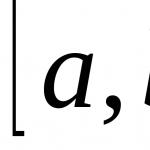Who invented chips and how is this delicacy made? The history of the emergence of chips The history of the emergence of Russian potato chips.
George Crum, born George Speck, was born in 1828 in New York (Malta, New York). His mother was from the indigenous Huron Indians, and his father, of mixed race, worked as a jockey. The surname "Crum" was his father's racing name, which George began using as a teenager.
Like many in that area of the country, George began working in the resort area after high school, and soon discovered his love for cooking and the food industry. Very soon he was working as a cook at Cary Moon's Lake Lodge in Saratoga, and over time his culinary talents made him a highly respected chef.
According to history, George made his invention, potato chips, while working in a restaurant in Saratoga Springs, New York. Thus, one of the restaurant guests complained that the French fries served to him were cut too large. In response, the ambitious George, who was not used to customers complaining about his dishes, cut them as thin as he could, fried them, sprinkled them with salt and sent them to the hall. He was almost sure that the client would see his “harmfulness” and start complaining again, but, to his surprise, he was very pleased. Moreover, the client began to come and order this dish again and again, and soon Crum's chips began to be popular with other guests, and over time, french fries according to George's recipe became a "feature" of the restaurant, the dish was called "Saratoga chips" or " potato crunches".
However, many are skeptical about the history of the invention of chips by Crum, claiming that the recipe for chips was published in a cookbook back in 1832.
It is known that by 1860, George opened his own restaurant called "Crum's House" in a picturesque lakeside location in Malta, New York (Malta). They say that a bowl of branded chips was served as a treat at every table , and soon it was the chips that made this establishment very popular.
The story of the invention of chips became widespread much later - in the 1930s, and even later they became the national American food. However, there is still debate about whether George Crum is the real inventor of chips or not. Be that as it may, residents of Saratoga and the surrounding area consider these places to be the birthplace of chips, and George Crum is called their sole inventor. The name of American tycoon Cornelius Vanderbilt is often associated with this story, who at some point was a regular customer of Crum’s restaurant, and later it was Vanderbilt who was behind a large-scale advertising campaign, becoming the main popularizer of chips in the United States.
The name “chips” comes from the English “chips”, which means “piece”, “slice”. The history of the creation of chips begins in 1853, and they appeared completely by accident. One day, Cornelius Vanderbilt, an American millionaire, stayed at the Moon Lake House Hotel in Saratoga Springs. While dining at the hotel, Vanderbilt three times expressed his dissatisfaction with the fact that the potatoes were cut into too large slices. Local chef George Crum, being a man of character, ended up preparing thinly sliced potatoes fried in oil for the millionaire. Unexpectedly, Vanderbilt liked the chef's new dish. He happily ordered it every time he dined at the hotel. Thus, “Saratoga chips,” as they were nicknamed, became the restaurant’s signature dish.

Seven years after the incident, George Crum opened his own chip restaurant in 1860. However, over time, this dish appeared in other food places, which is not surprising, since preparing chips is not at all difficult. Soon, chips appeared on the menus of America's best restaurants.


Until 1890, chips could only be eaten in restaurants or snack bars. The situation was changed by William Tappenden, the owner of a small diner in Cleveland. He was the first to come up with the idea of selling chips on the street in paper bags! Tappenden took this step in search of new clients during the crisis. He started selling chips from an old van.

Another 36 years later, the idea of packaging chips in wax paper was born. It was expressed by Laura Scudder. This packaging made it possible to transport the chips and extend their shelf life. Thus, chips appeared on supermarket shelves. However, mass production of chips became possible only after the invention of the potato peeling machine. Somewhat later, the first machine for the industrial production of chips appeared. It was created by Freeman Macbeth. His invention was immediately acquired by one of the companies, which began mass production of chips.


The chips were made without adding salt or any seasonings. In 1940, Tayto began producing flavored chips for the first time and began selling chips with a packet of salt.

In the Soviet Union, the history of the creation of chips begins in 1963. True, they were not called chips, but “Moscow crispy potatoes in slices,” which were produced at Mospishkombinat No. 1. In Russia, chips in their modern form appeared in the mid-90s and quickly became widespread.


Currently, manufacturers offer a huge selection of chips with different flavors. Today, there are two main methods for producing chips. The first method involves the production of chips from pieces of raw potatoes (it is called traditional), the second - from crushed potatoes.
According to the most common theory, this popular snack was created thanks to the contribution of George Crum. George "Speck" Crum worked as a chef at an expensive American restaurant called Moon's Lake House, located in Saratoga Springs. The restaurant's menu featured French fries prepared by the chef in the standard "Pommes Pont-Neuf" style, which was invented in France and popularized in the United States by Thomas Jefferson.
One day at dinner, the restaurant's regular customer, railroad magnate Cornelius Vanderbilt, returned the French fries to the kitchen, complaining that they were cut too thick. Then George Crum fried a thinner batch of fries, but this dish also met with disapproval. Angry, the chef cut the potatoes so that they showed through in the light and fried them in oil until crisp. Surprisingly, the guest was delighted with the paper-thin potatoes. Over time, the chips, called Saratoga Chips, became the restaurant's most popular specialty. And in 1860, Crum opened his own restaurant, with a basket of chips on each table.
However, this is not the only version of the origin of chips. According to another theory, the snack arose due to an accident that happened to George Crum's sister, Catherine Wicks, who also worked as a cook at the Moon's Lake House restaurant. She accidentally dropped a piece of potato into the frying pan with oil, and then took it out and put it on a plate. The brother, having tried an unusual piece of potato, said: “Now we will have a lot of them.” After the death of Catherine Weeks in 1924, her obituary was as follows:
"George Crum's sister, Mrs. Catherine Weeks, died aged 102. She was the cook at Moon's Lake House. It was she who invented and fried the famous Saratoga Chips.”
And in a 1932 interview with the Saratoga newspaper, her grandson John Gilbert Freeman referred to his grandmother as “the true inventor of the potato chip.”

Their father was African-American, and their mother was a native of the Huron Indian tribe. Crum and his sister Catherine Weeks, like other Indians or mixed-race people of the era, are described as “Indian,” “mulatto,” or “black,” depending on one’s judgment.


Story
It is believed that the chips were accidentally invented by George Crum (George "Speck" Crum was born in 1822 in Saratoga Lake, New York; his father was African American and his mother was a Huron Indian; Speck later took the surname Crum). August 24, 1853, at the Saratoga Springs resort (USA), working as a chef at the fashionable restaurant of the Moon’s Lake Lodge hotel. According to legend, one of the restaurant's signature recipes Moon's Lake Lodge there were "french fries". One day at dinner, railroad magnate Cornelius Vanderbilt returned fried potatoes to the kitchen, complaining that they were “too thick.” The chef, Krum, decided to play a trick on the tycoon, cut the potatoes literally paper-thin and fried them. But the tycoon and his friends liked the dish.
 The recipe was nicknamed " Saratoga Chips" After some time, chips became the restaurant's most popular specialty.
The recipe was nicknamed " Saratoga Chips" After some time, chips became the restaurant's most popular specialty.
Product gallery
- Product gallery
Production of homemade chips (1).JPG
Production of homemade chips (2).JPG
Production of homemade chips (4).JPG
Production of homemade chips (7).JPG
Production of homemade chips (8).JPG
Write a review about the article "Chips"
Notes
Excerpt characterizing Chips
“Yes, gunpowder,” said the count. - It hit me! And what a voice: even though it’s my daughter, I’ll tell the truth, she will be a singer, Salomoni is different. We hired an Italian to teach her.- Is not it too early? They say it is harmful for your voice to study at this time.
- Oh, no, it’s so early! - said the count. - How did our mothers get married at twelve thirteen?
- She’s already in love with Boris! What? - said the countess, smiling quietly, looking at Boris’s mother, and, apparently answering the thought that had always occupied her, she continued. - Well, you see, if I had kept her strictly, I would have forbidden her... God knows what they would have done on the sly (the countess meant: they would have kissed), and now I know every word she says. She will come running in the evening and tell me everything. Maybe I'm spoiling her; but, really, this seems to be better. I kept the eldest strictly.
“Yes, I was brought up completely differently,” said the eldest, beautiful Countess Vera, smiling.
But a smile did not grace Vera’s face, as usually happens; on the contrary, her face became unnatural and therefore unpleasant.
The eldest, Vera, was good, she was not stupid, she studied well, she was well brought up, her voice was pleasant, what she said was fair and appropriate; but, strangely, everyone, both the guest and the countess, looked back at her, as if they were surprised why she said this, and felt awkward.
“They always play tricks with older children, they want to do something extraordinary,” said the guest.
- To be honest, ma chere! The Countess was playing tricks with Vera,” said the Count. - Well, oh well! Still, she turned out nice,” he added, winking approvingly at Vera.
The guests got up and left, promising to come for dinner.
- What a manner! They were already sitting, sitting! - said the countess, ushering the guests out.
When Natasha left the living room and ran, she only reached the flower shop. She stopped in this room, listening to the conversation in the living room and waiting for Boris to come out. She was already beginning to get impatient and, stamping her foot, was about to cry because he was not walking now, when she heard the quiet, not fast, decent steps of a young man.
Natasha quickly rushed between the flower pots and hid.
Boris stopped in the middle of the room, looked around, brushed specks from his uniform sleeve with his hand and walked up to the mirror, examining his handsome face. Natasha, having become quiet, looked out from her ambush, waiting for what he would do. He stood in front of the mirror for a while, smiled and went to the exit door. Natasha wanted to call out to him, but then changed her mind. “Let him search,” she told herself. Boris had just left when a flushed Sonya emerged from another door, whispering something angrily through her tears. Natasha restrained herself from her first move to run out to her and remained in her ambush, as if under an invisible cap, looking out for what was happening in the world. She experienced a special new pleasure. Sonya whispered something and looked back at the living room door. Nikolai came out of the door.
- Sonya! What happened to you? Is this possible? - Nikolai said, running up to her.
- Nothing, nothing, leave me! – Sonya began to sob.
- No, I know what.
- Well, you know, that’s great, and go to her.
- Sooo! One word! Is it possible to torture me and yourself like this because of a fantasy? - Nikolai said, taking her hand.
Sonya did not pull his hands away and stopped crying.
Natasha, without moving or breathing, looked out with shining heads from her ambush. "What will happen now"? she thought.
- Sonya! I don't need the whole world! “You alone are everything to me,” Nikolai said. - I'll prove it to you.
“I don’t like it when you talk like that.”
- Well, I won’t, I’m sorry, Sonya! “He pulled her towards him and kissed her.
“Oh, how good!” thought Natasha, and when Sonya and Nikolai left the room, she followed them and called Boris to her.
“Boris, come here,” she said with a significant and cunning look. – I need to tell you one thing. Here, here,” she said and led him into the flower shop to the place between the tubs where she was hidden. Boris, smiling, followed her.
– What is this one thing? - he asked.
She was embarrassed, looked around her and, seeing her doll abandoned on the tub, took it in her hands.
“Kiss the doll,” she said.
Boris looked into her lively face with an attentive, affectionate gaze and did not answer.
- You do not want? Well, come here,” she said and went deeper into the flowers and threw the doll. - Closer, closer! - she whispered. She caught the officer's cuffs with her hands, and solemnity and fear were visible in her reddened face.
- Do you want to kiss me? – she whispered barely audibly, looking at him from under her brows, smiling and almost crying with excitement.
Boris blushed.
- How funny you are! - he said, bending over to her, blushing even more, but doing nothing and waiting.
She suddenly jumped up on the tub so that she stood taller than him, hugged him with both arms so that her thin bare arms bent above his neck and, moving her hair back with a movement of her head, kissed him right on the lips.
She slipped between the pots to the other side of the flowers and, lowering her head, stopped.
“Natasha,” he said, “you know that I love you, but...
-Are you in love with me? – Natasha interrupted him.
- Yes, I’m in love, but please, let’s not do what we’re doing now... Four more years... Then I’ll ask for your hand.
Natasha thought.
“Thirteen, fourteen, fifteen, sixteen...” she said, counting with her thin fingers. - Fine! So it's over?
And a smile of joy and peace lit up her lively face.
- It's over! - said Boris.
- Forever? - said the girl. - Until death?
And, taking his arm, with a happy face, she quietly walked next to him into the sofa.
The countess was so tired of the visits that she did not order to receive anyone else, and the doorman was only ordered to invite everyone who would still come with congratulations to eat. The Countess wanted to talk privately with her childhood friend, Princess Anna Mikhailovna, whom she had not seen well since her arrival from St. Petersburg. Anna Mikhailovna, with her tear-stained and pleasant face, moved closer to the countess’s chair.
“I’ll be completely frank with you,” said Anna Mikhailovna. – There are very few of us left, old friends! This is why I value your friendship so much.
Anna Mikhailovna looked at Vera and stopped. The Countess shook hands with her friend.
“Vera,” said the countess, addressing her eldest daughter, obviously unloved. - How come you have no idea about anything? Don't you feel like you're out of place here? Go to your sisters, or...
Beautiful Vera smiled contemptuously, apparently not feeling the slightest insult.
“If you had told me long ago, mamma, I would have left immediately,” she said, and went to her room.
But, passing by the sofa, she noticed that there were two couples sitting symmetrically at two windows. She stopped and smiled contemptuously. Sonya sat close to Nikolai, who was copying out poems for her that he had written for the first time. Boris and Natasha were sitting at another window and fell silent when Vera entered. Sonya and Natasha looked at Vera with guilty and happy faces.
It was fun and touching to look at these girls in love, but the sight of them, obviously, did not arouse a pleasant feeling in Vera.
“How many times have I asked you,” she said, “not to take my things, you have your own room.”
She took the inkwell from Nikolai.
“Now, now,” he said, wetting his pen.
“You know how to do everything at the wrong time,” said Vera. “Then they ran into the living room, so everyone felt ashamed of you.”
Despite the fact that, or precisely because, what she said was completely fair, no one answered her, and all four only looked at each other. She lingered in the room with the inkwell in her hand.
Inventor: Cornelius Vanderbilt and George Croom
A country: USA
Time of invention: 1853
The English word chips means “slice, piece.” According to legend, the inventors of chips are the capricious American millionaire Cornelius Vanderbilt and the chef with the character of the Moon Lake House Hotel in Saratoga Springs, George Croom.
In 1853, Vanderbilt stayed at this hotel. During lunch, the capricious rich man sent potatoes to the kitchen three times, cut, in his opinion, too large. In response, the irritated Krum chopped the tubers into thin slices and fried them in oil. But strangely enough, the chef’s provocation failed.
Vanderbilt was delighted and ate crispy potato slices throughout his stay at the hotel. The chips became the restaurant's signature dish and were called "Saratoga chips."  There is a version that the chips were not invented by George, but by his sister, who was with him in the restaurant kitchen that same day.
There is a version that the chips were not invented by George, but by his sister, who was with him in the restaurant kitchen that same day.
In 1860, Crum opened his own restaurant, where he sold chips, but not for takeout. However, due to the ease of production, the chips soon appeared in other places. The restaurant operated for 30 years, until 1890.
Very soon, chips became popular among the American elite and entered the menu of fashionable restaurants in the United States.
In 1890, chips made their way from restaurants to the street. The chips were popularized by a small merchant from Cleveland, William Tappenden. He owned a diner where he fried potato wedges. The crisis caused by the overproduction of chips forced Tappenden to look for new customers. Soon the product was sold on the streets of Cleveland from an old van decorated with advertisements for chips. For the first time, they were served to customers in a bag, also decorated with an advertisement for Tappenden's establishment.
 And in 1926, a certain Laura Scudder suggested packaging them in wax paper. As a result, it became possible to store chips longer, transport them over long distances, and sell them without the participation of a seller, because buyers could take the bags themselves from store shelves.
And in 1926, a certain Laura Scudder suggested packaging them in wax paper. As a result, it became possible to store chips longer, transport them over long distances, and sell them without the participation of a seller, because buyers could take the bags themselves from store shelves.
After Herman Lay invented a potato peeling machine, mass production of chips began.
Until 1921, chips were known only in the United States.
 Already in 1929, the first machine for the industrial production of chips was invented. It was invented by self-taught mechanic Freeman Macbeth, who sold the car to one of the companies. The eccentric inventor refused payment for his invention, demanding only that he be allowed to tinker with it whenever he wanted.
Already in 1929, the first machine for the industrial production of chips was invented. It was invented by self-taught mechanic Freeman Macbeth, who sold the car to one of the companies. The eccentric inventor refused payment for his invention, demanding only that he be allowed to tinker with it whenever he wanted.
Until 1940, chips were produced without seasoning. A small Irish company, Tayto, is developing technology for adding seasonings and flavorings to production; chips are sold with a bag of salt. Chips are becoming popular. After some time, the owner sells Tayto and becomes the richest man in Ireland.
Today there are two main recipes for making chips. The traditional way is to make chips from pieces of raw potatoes, as Chef Croome pioneered. The quality of the raw materials is very important here: not all tubers can be used to make good crispy potatoes. They should be dense, with a low sugar content, without damage inside and with  flat surface. From 5-6 kilograms of quality potatoes you get 1 kilogram of chips.
flat surface. From 5-6 kilograms of quality potatoes you get 1 kilogram of chips.
Breeders have been cultivating special varieties of potatoes that are most convenient for preparing this product for decades. According to the standards of most manufacturers, frying oil should not impart any foreign odor to the chips. Therefore, in most cases, olive, soy or palm oil is used. After this, the finished chips are dried at room temperature, salted, sprinkled with spices and packaged.
 The second method involves the production of chips from ground potatoes - flakes, granules or starch. The initial quality of raw materials intended for extrusion (wiping and drying) is also important, but precisely at the stage of production of bulk products. The manufacturer of such “restored” chips does not care about defects in the tubers or uneven cooking.
The second method involves the production of chips from ground potatoes - flakes, granules or starch. The initial quality of raw materials intended for extrusion (wiping and drying) is also important, but precisely at the stage of production of bulk products. The manufacturer of such “restored” chips does not care about defects in the tubers or uneven cooking.
Chips made from mashed potatoes, which are then rolled out and shaped, have lower calorie content than natural ones.
Interestingly, the inventors of chips, Americans, still eat more chips today than anywhere else in the world - almost 3 kg per year! According to statistics from the US Department of Agriculture,  Potato chips account for 11% of all potatoes grown in the United States. In 1937, the Yankees even created a special research organization, the National Institute of Potato Chips, which began scientific research in this area. And in 1961 it became the International Potato Chip Institute.
Potato chips account for 11% of all potatoes grown in the United States. In 1937, the Yankees even created a special research organization, the National Institute of Potato Chips, which began scientific research in this area. And in 1961 it became the International Potato Chip Institute.
In the 1980s, scientific studies emerged showing that excessive consumption of chips can lead to unpleasant consequences. Fatty chips are very high in calories, which consequently affects  figure. Indeed, research has shown that Americans are one of the fattest nations in the world. American manufacturers even began producing chips with reduced fat content, which began to be in considerable demand.
figure. Indeed, research has shown that Americans are one of the fattest nations in the world. American manufacturers even began producing chips with reduced fat content, which began to be in considerable demand.
In the USSR, the first chips appeared in 1963 and were called “crispy Moscow potato slices.” The corresponding production was established in Moscow at the Mospishchekombinat No. 1 enterprise. In Russia, the first chips appeared in the mid-90s.






